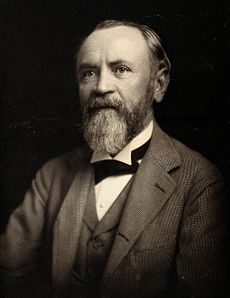Phipps Conservatory in Pittsburgh – a place full of wonder!
I should have been named Alice like the girl from Lewis Carroll’s Alice’s Adventures in Wonderland. No kidding. The day Mary Bernacki took me to the Phipps Conservatory in Pittsburgh, I felt like I fell down another rabbit hole! (I’m so good at doing this I should probably have a series called My Rabbit Hole Experiences.)
 Well, Alice fell down a rabbit hole, but I went willingly with Mary to a magnificent place full of wonder. This was one afternoon during the Golf Heritage Society (GHS) National Convention conference just before our Gala Dinner at our hotel in Monroeville, PA.
Well, Alice fell down a rabbit hole, but I went willingly with Mary to a magnificent place full of wonder. This was one afternoon during the Golf Heritage Society (GHS) National Convention conference just before our Gala Dinner at our hotel in Monroeville, PA.
There was no White Rabbit, but there were TROLLS to greet us. Adorable, colorful, talking trolls. Mary has probably been through the Phipps hundreds of times, since she grew up in this part of Pittsburgh. She and her husband Bern, president of the GHS, are both native Pittsburghers.
“Here, take my land” – original gift that keeps giving
 Mary had first taken me for a drive through the lush, hilly Schenley Park, which is the setting for the Phipps, on the way home from the airport a few days before. My guide told me the land had been donated by a woman named Mary Schenley, who, when she got married went to Europe, and said, “Here, take my land.” This was back in 1889. It was no small gift — we’re talking about 300 acres!
Mary had first taken me for a drive through the lush, hilly Schenley Park, which is the setting for the Phipps, on the way home from the airport a few days before. My guide told me the land had been donated by a woman named Mary Schenley, who, when she got married went to Europe, and said, “Here, take my land.” This was back in 1889. It was no small gift — we’re talking about 300 acres!
This is a fascinating story all by itself. When she was young, Mary Croghan attended a boarding school in downtown Pittsburgh. At about age 16, she eloped and married Capt. Edward W. Schenley of the Royal Navy.
The land that Schenley owned was willed to her by her pioneer grandfather, James O’Hara. For that story we have to backtrack to when O’Hara emigrated from Ireland in 1772. He had successful careers as a soldier, a businessman, and a federal official. O’Hara worked as a trader and Indian agent, and also served as an officer in the Third Virginia Regiment during the War of Independence. Obviously along the way, he amassed a considerable amount of land.
O’Hara’s generous granddaughter also contributed five acres of land for the Western Pennsylvania School for the Blind. Mary Schenley did more. She gave the Old Blockhouse to the Daughters of the American Revolution, and she gave the city of Pittsburgh another nineteen acres where the Carnegie Museum now stands. What an incredible woman.
Phipps started with a great vision
 Then along comes another philanthropist — Mr. Henry W. Phipps. He declared that he wanted to “erect something that would prove to be a source of instruction as well as pleasure to the people.”
Then along comes another philanthropist — Mr. Henry W. Phipps. He declared that he wanted to “erect something that would prove to be a source of instruction as well as pleasure to the people.”
His vision started with a structure designed by Lord & Burnham, a New York-based greenhouse manufacturer, for a fee of $100,000. The original nine display rooms were completed in August of 1893. When the building opened to the public, many plants originating from the World’s Columbian Exposition in Chicago were featured. After its founding, Henry Phipps continued to serve as the Conservatory’s benefactor until his death in 1930 at the age of 91.
15 acres and 14-room glasshouse with 23 distinct gardens
 This remarkable place has continued to grow like the extraordinary plants it houses. The Phipps now encompasses fifteen acres and includes a 14-room glasshouse with 23 distinct gardens.
This remarkable place has continued to grow like the extraordinary plants it houses. The Phipps now encompasses fifteen acres and includes a 14-room glasshouse with 23 distinct gardens.
We got a tantalizing taste of the seasonal exhibit ahead of Halloween in a room full of pumpkins, decorated with ghosts, witches and bats hanging from the ceiling.
From orchids to an amazing bonsai collection, there is just about no end to the beauty. There is even an enormous model railroad with a very complex layout.
 Unless you popped outside for a moment like we did, you wouldn’t even know about the Center for Sustainable Landscapes. It is the first and only building to meet six of the highest green certifications. Sadly, we didn’t have time to go inside, but what didn’t I get to see? Here is a for instance — there is a new exhibit called “Planets Earth” that looks at the problem of resource use, climate change, and other environmental issues. I read online that the exhibit identifies ways of thinking that drive conventional decision making, and it offers courageous new paths toward changing the way we interact with the world.
Unless you popped outside for a moment like we did, you wouldn’t even know about the Center for Sustainable Landscapes. It is the first and only building to meet six of the highest green certifications. Sadly, we didn’t have time to go inside, but what didn’t I get to see? Here is a for instance — there is a new exhibit called “Planets Earth” that looks at the problem of resource use, climate change, and other environmental issues. I read online that the exhibit identifies ways of thinking that drive conventional decision making, and it offers courageous new paths toward changing the way we interact with the world.
We did have a few more rooms to go through before exiting the way we came in. That meant we got to see an entire exhibit on Cuba with a wide variety of exotic plants, a birding station, and even learn about natural medicines that might be found in Cuba that are rooted in organic farming. Traveling to this magical tropical environment made it that much harder to tear ourselves away.
A dazzling Chihuly sculpture
Just as we were about to leave from our marvelous indoor universe, I was stopped in my tracks when I discovered a dazzling, large-scale Dale Chihuly sculpture. The intricate array of bright yellow, blown glass pieces was suspended from the metal supports of the roof in a stunning, organic display.
The monumental Chihuly was as energizing as the sunlight that greeted us as we emerged back into the outdoor scenery. For sure, this was the best damn rabbit hole I have ever stumbled into.






